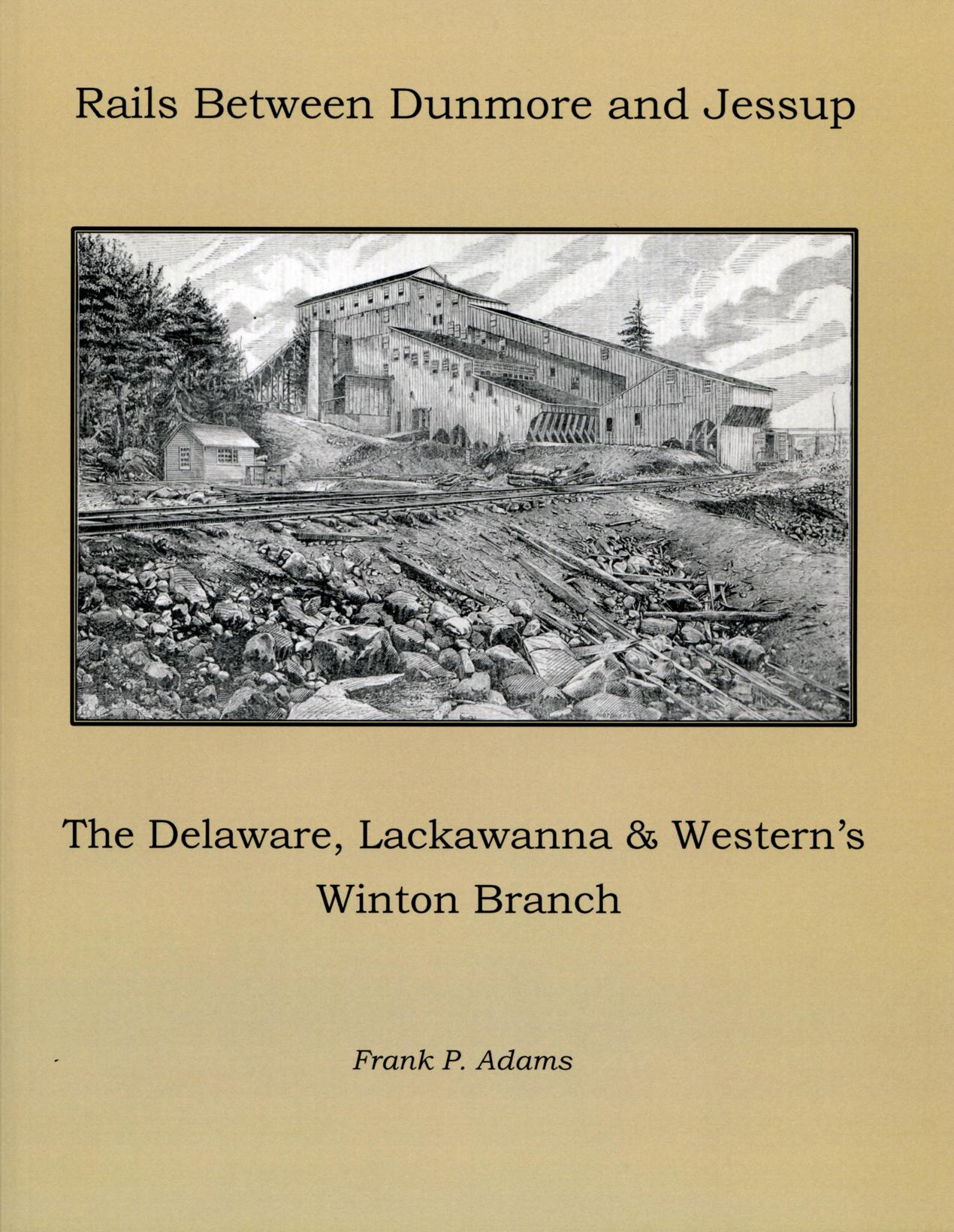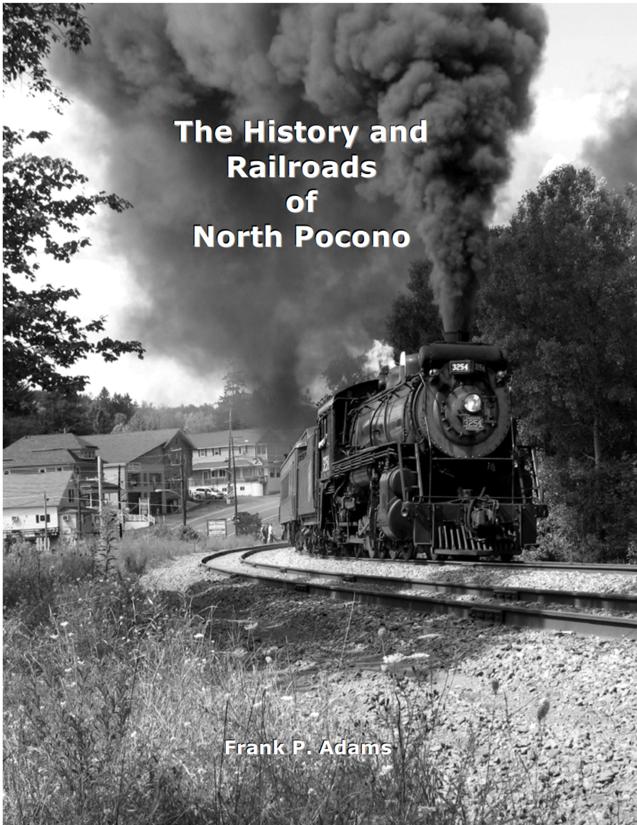The History and Railroads of North Pocono is a nicely produced publication that covers the history of the area encompassed by the North Pocono School
District, much of what was once known as Drinker's Beech slightly to the east of Scranton, Pa. The book has 20 chapters plus several appendices and
121 figures that includes photographs, maps and other illustrations. Each of the 11 townships and municipalities with in North Pocono is accorded a chapter
that covers its history since initial settlement listing of many of the significant residents sometimes into the 1930s. The remaining eight chapters
summarize the history of the railroads within North Pocono, including the major carriers of the area, the Erie and Delaware, Lackawanna & Western as
well as other shorter railroads intended to facilitate extraction of timber, iron ore, or coal (e.g., Lackawanna Iron & Coal Co. iron ore railroad
and Pennsylvania Coal Co.'s gravity railroad).
Some of the railroads were very small and short-lived, and likely information on them cannot be found easily anywhere else. For the larger roads,
the chapters are useful to understand their roles in North Pocono but do not, and cannot be expected to, cover their entire history. The illustrations
are generally well produced; however, many of the maps are scaled down from larger originals and a magnifying glass is very useful to clearly interpret
them. The book also includes five explanatory sidebars to the chapters, including a discussion of standard gauge, naming conventions for Lackawanna
locomotives, and discussions of three-cylinder locomotives of the Erie & Wyoming Valley and the Lackawanna. The appendices are a chronology of the
North Pocono region, a listing of the Pennsylvania Coal Co. collieries, a locomotive roster of the Erie & Wyoming Valley, and some of the Phoebe Snow
jingles (Phoebe Snow was a marketing tool used by the Lackawanna to promote the cleanliness of its passenger service.)
The author includes a six-page bibliography that is divided by chapter, or in some cases, two together. The index, of 13 pages, seems quite complete.
The book includes many footnotes; some of the footnotes lead the reader to the source of the information in the text, whereas others provide more detail
to the text or define concepts that are not generally known by a general readership.
The book is hardbound and nicely printed on glossy paper. The History and Railroads of North Pocono is well worth the investment for people interested
in the history of Northeastern Pennsylvania or the small and largely unheralded railroads in its area. For partisans of the Erie and Lackawanna, there
is information specific to the North Pocono that is of interest.
Review by William F Laudenslayer, Jr. of Lake City, California as Published in
Railroad History
Fall-Winter 2014
© The Railway & Locomotive Historical Society, Inc.
Available from the
Lackawanna & Wyoming Valley RHS
who receive all proceeds.


